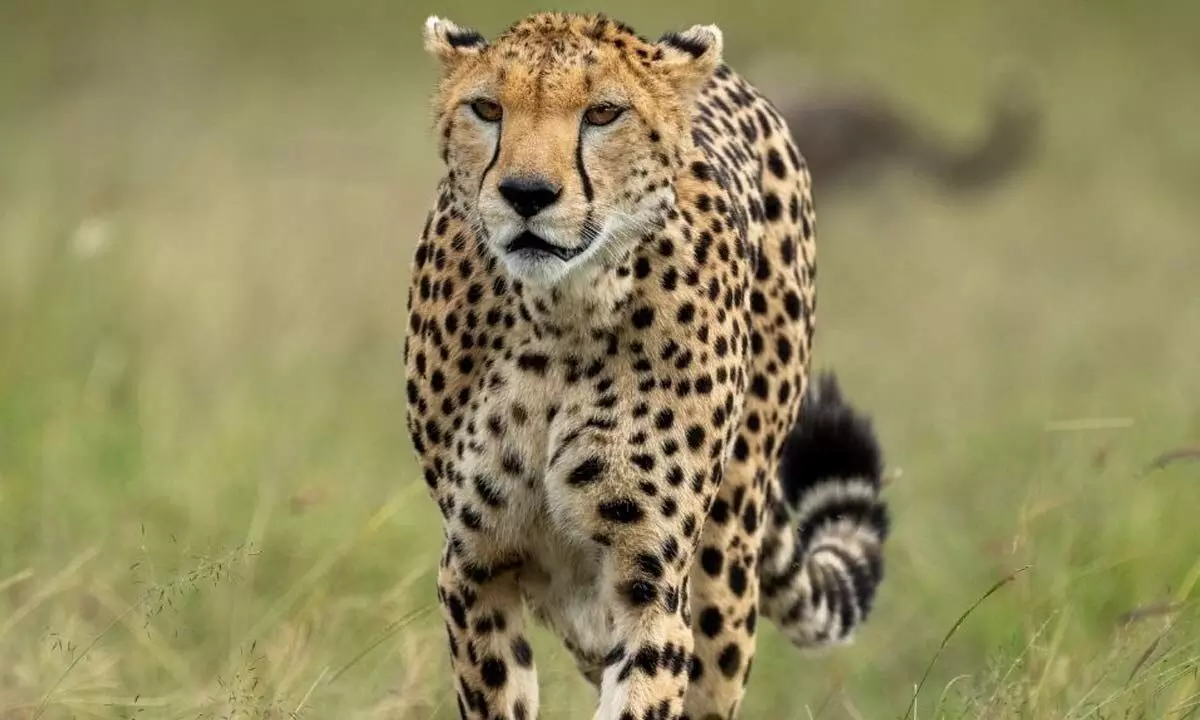Cheetah action plan raises eyebrows

Cheetah action plan raises eyebrows
The now extinct cheetah will be making a comeback to the country this month from South Africa.
The now extinct cheetah will be making a comeback to the country this month from South Africa. The last spotted cheetah in our country died in Chhattisgarh in 1947 and it was declared extinct in the country in 1952. Since then we have not had cheetahs here.
The Wildlife Institute of India (WII) some years back prepared a cheetah re-introduction project. Honourable Supreme Court in all its wisdom had earlier approved the proposal but said they should be introduced to a suitable habit in the country. Thus began the process of reintroducing cheetahs to India and Kuno in Sheopur district of Madhya Pradesh was chosen as the suitable habitat. The plan is to reintroduce five females to be migrated from South Africa. Kuno is located in the Chambal region and is spread over an extent of 750 sq km. Officials who are enthusiastic about introducing the cheetah back to India claim Kuno has a good population of four-horned antelopes, chinkara, nilgai, wild boar, spotted deer and sambar.
That is just the background. But, what is the reality? Can cheetahs really survive in India once reintroduced? Is there a really habitable region in India for cheetahs now? If so how and why did those become extinct earlier? These are some of the questions that are begging for answers. Centre decided to reintroduce cheetah to India way back in January this year. The Minister for Forests and Environment, Bhupender Yadav, said PM was keen on the protection and conservation of seven major big cats including Cheetah.
"Project Cheetah aims to bring back independent India's only extinct large mammal – the cheetah. As part of the project, 50 cheetahs will be introduced in various National Parks over five years," he stated. Experts are opposed to it as the translocation of Asiatic lions to Kuno wildlife will get delayed. Lions are more powerful than cheetah and life for cheetah would become a hell in Kuno. The Kuno plan not only subverts a standing order of the Supreme Court but also poses problems for other wildlife like tigers, lions and elephants due to the fencing idea of the South Africans.
A part of the population uses the Kuno and by fencing, we may be preventing their movement. We cannot risk isolation and the risk to inbreeding. The animals lose the genetic connectivity as is being feared now if a part of Kuno is fenced. Madhya Pradesh had in the past been home to cheetahs. The state has a long conservation history as it has the right habitat. A successful animal translocation track record is also there, officials say, referring to the tiger reintroduction programme in the Panna Tiger Reserve in 2009.
Cheetah is considered vulnerable under the International Union for Conservation of Nature's (IUCN) red list of threatened species, with a declining population of less than 7,000 found primarily in African savannas. The Supreme Court last year set up a three- member committee to guide the NTCA on the cheetah re-introduction project. Another problem here is with the prey availability. African Cheetahs don't prey on deer. Will they easily adjust to the high density leopard population in Kuno? Cheetahs exist in low density areas. Then again they need larger areas to survive, even 10 times the area of other large cats. Officials have just forgotten all these aspects and the cheetah is landing here only to become re-extinct in no time.














